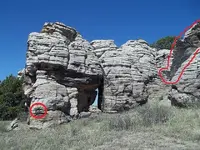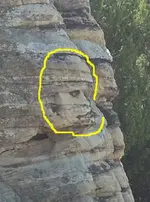Most of my experience is with Jesuit Priest and I know that the KGC and others was well versed in their method, it is my opinion that there are some that keep the site well tended to, i have reason to believe they are alive and well in these modern times, as they pass their ring along to the eldest son i think they also keep history alive in that manner , my suggestion is to be very careful, one good thing is that some are not as deep as 223 cm, lots of the ones that I have seen use blind corners for the cache, some are along the top of a triangle two in the corners and one between the corners, Initials were used to an extent, some are rock carvings, some are carved on trees, I have seen 19 in one section of land that was about a foot deep, 11,000.oo each and 3 that was a little over 6 foot deep that contained ( 3 divided into 2020 pounds ) the holes and carvings are still there, and the map has been published in the 1980's, do not discount rock patterns also if you look for KGC, There has been post showing a shallow hole with the possibility of being a cache site and then a cap rock below with another cache below. Thank you Steve, I appreciate your service to our country and I'm glad you got back safe. Missouri is a Great state to hunt , Civil War, KGC, Jesuit Priest, and others, just hunt smart, Pick one and learn everything you can about their method,horse shoe bends in Rivers, streams, brook, in the outside N.E. corners are my favorite, don't forget to look for stacked sites much our sections are done in these times. Keep in touch












